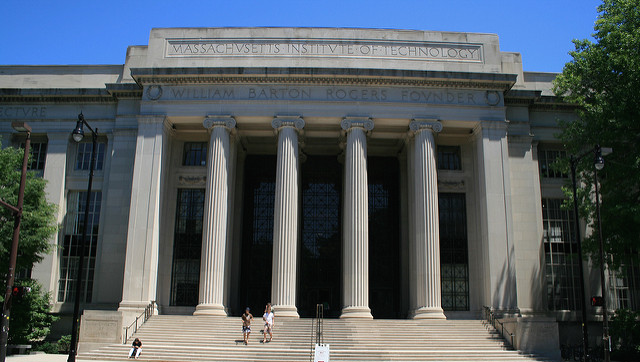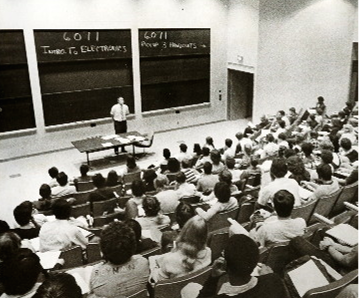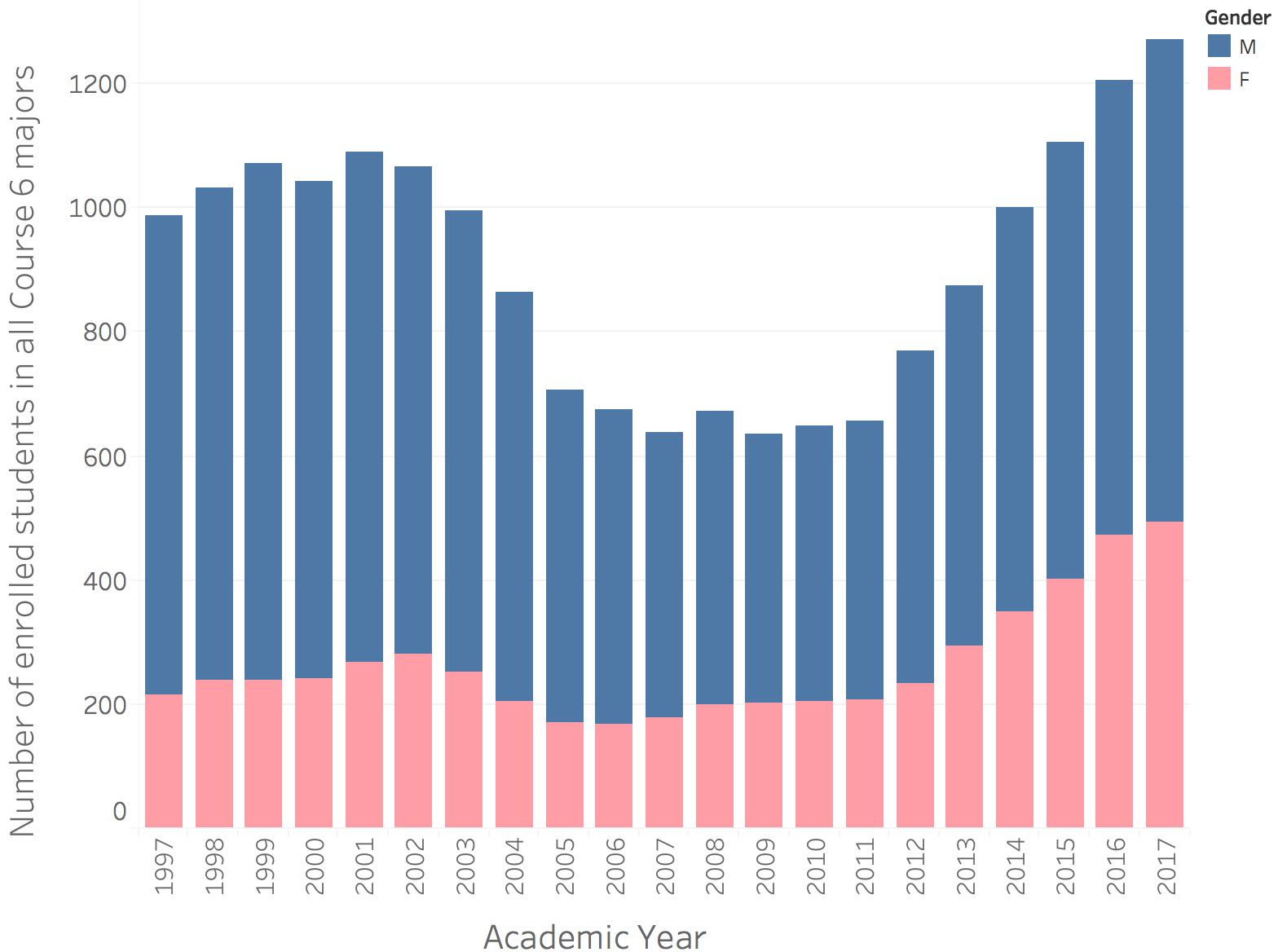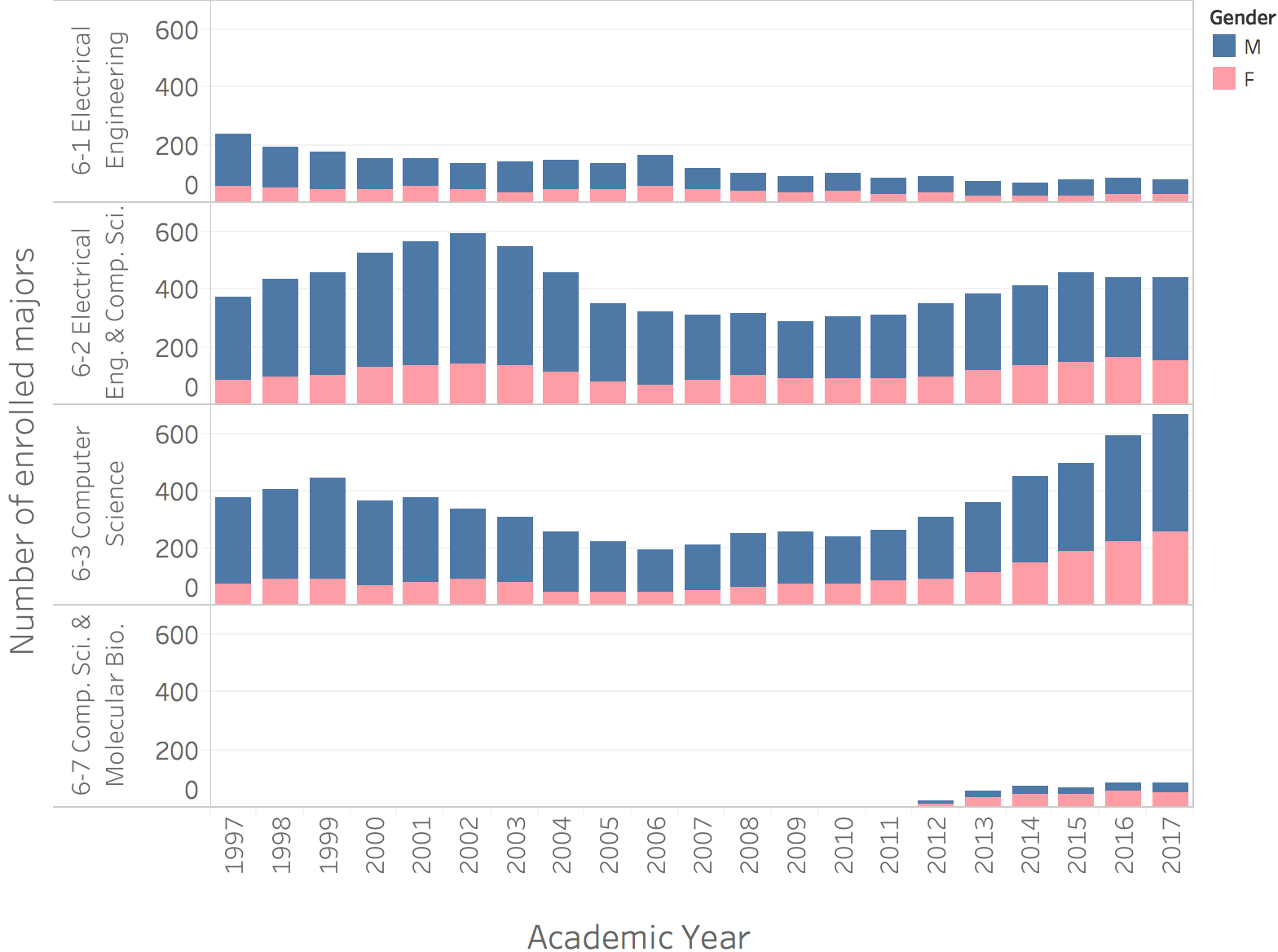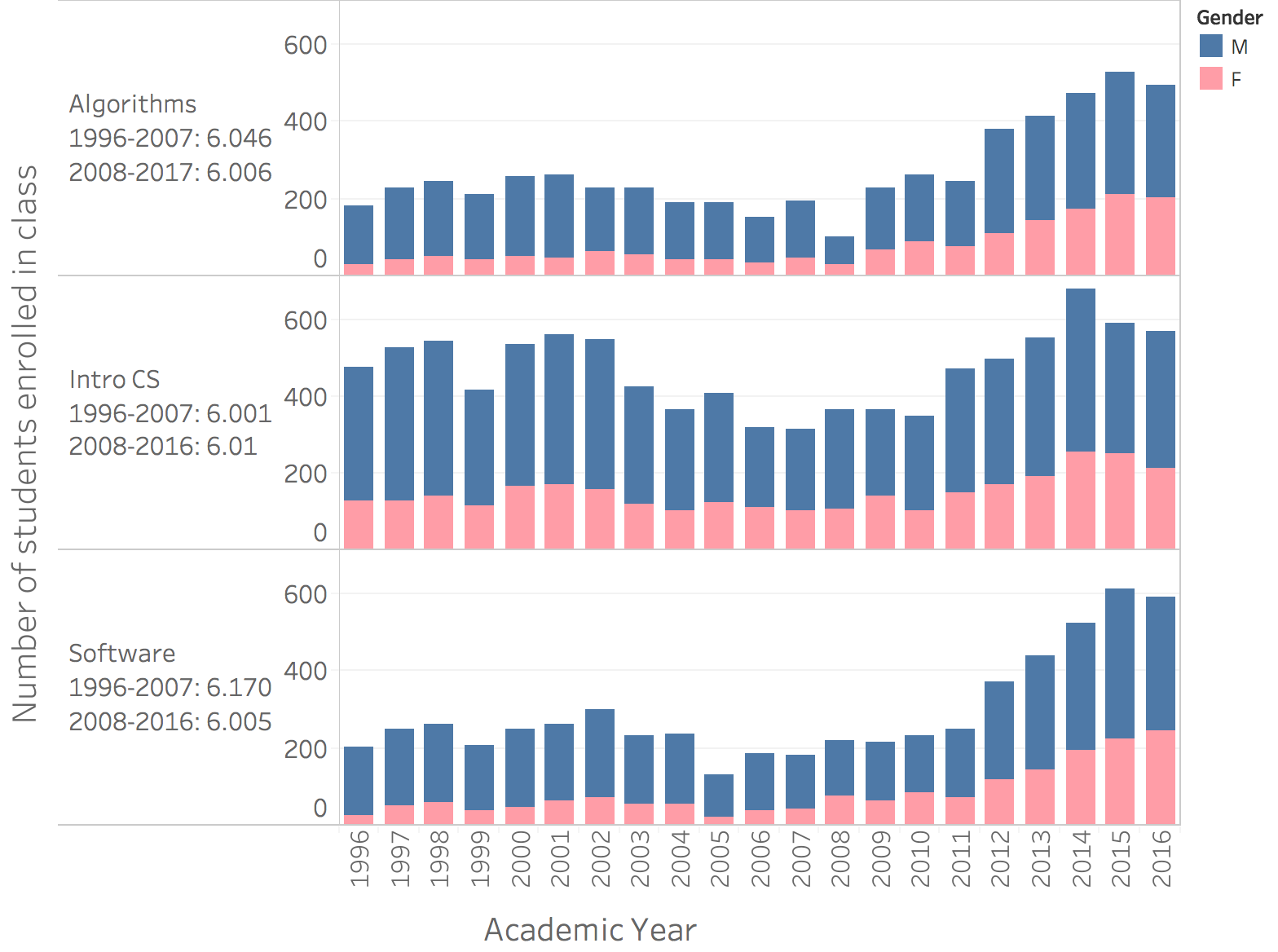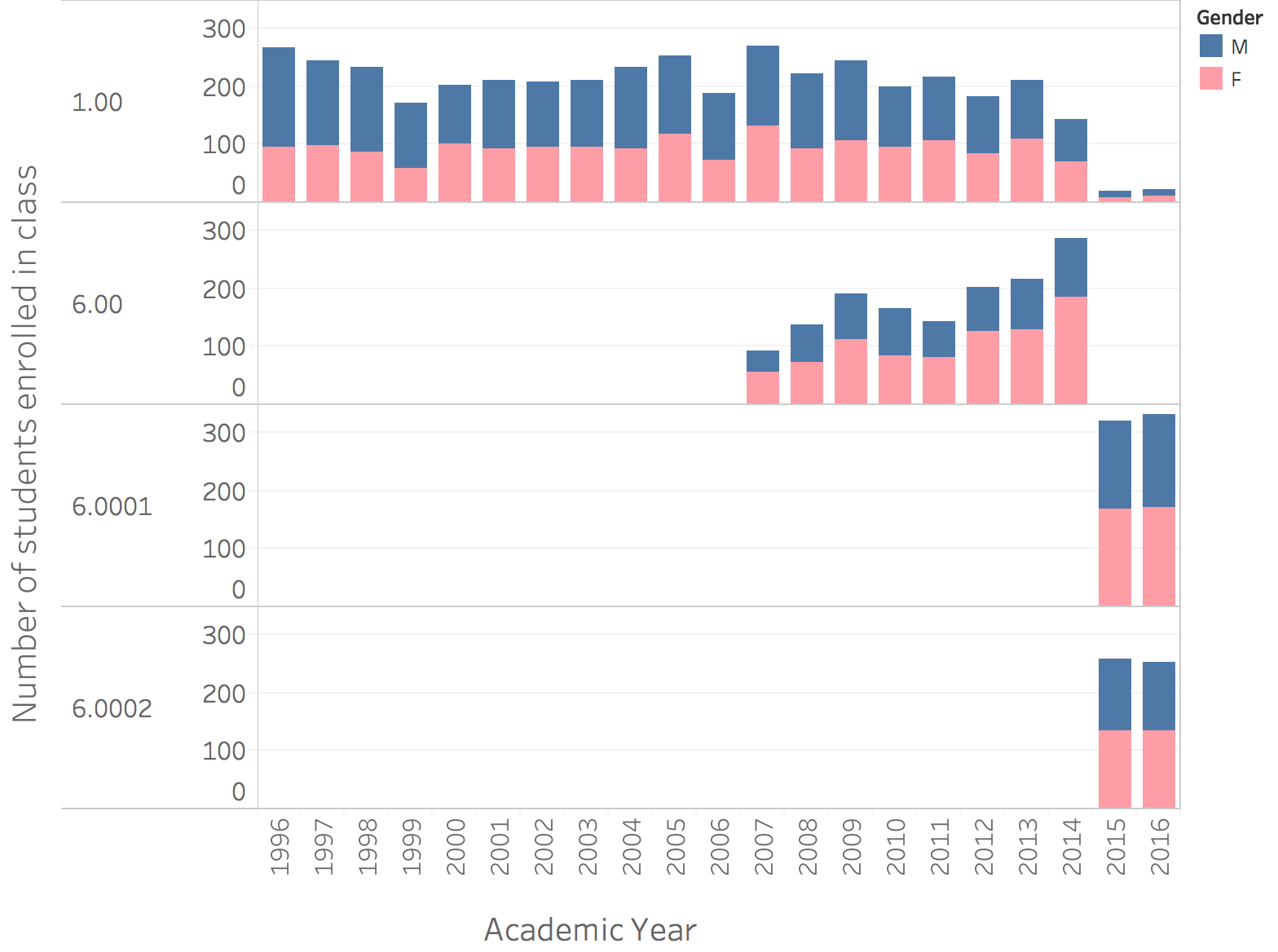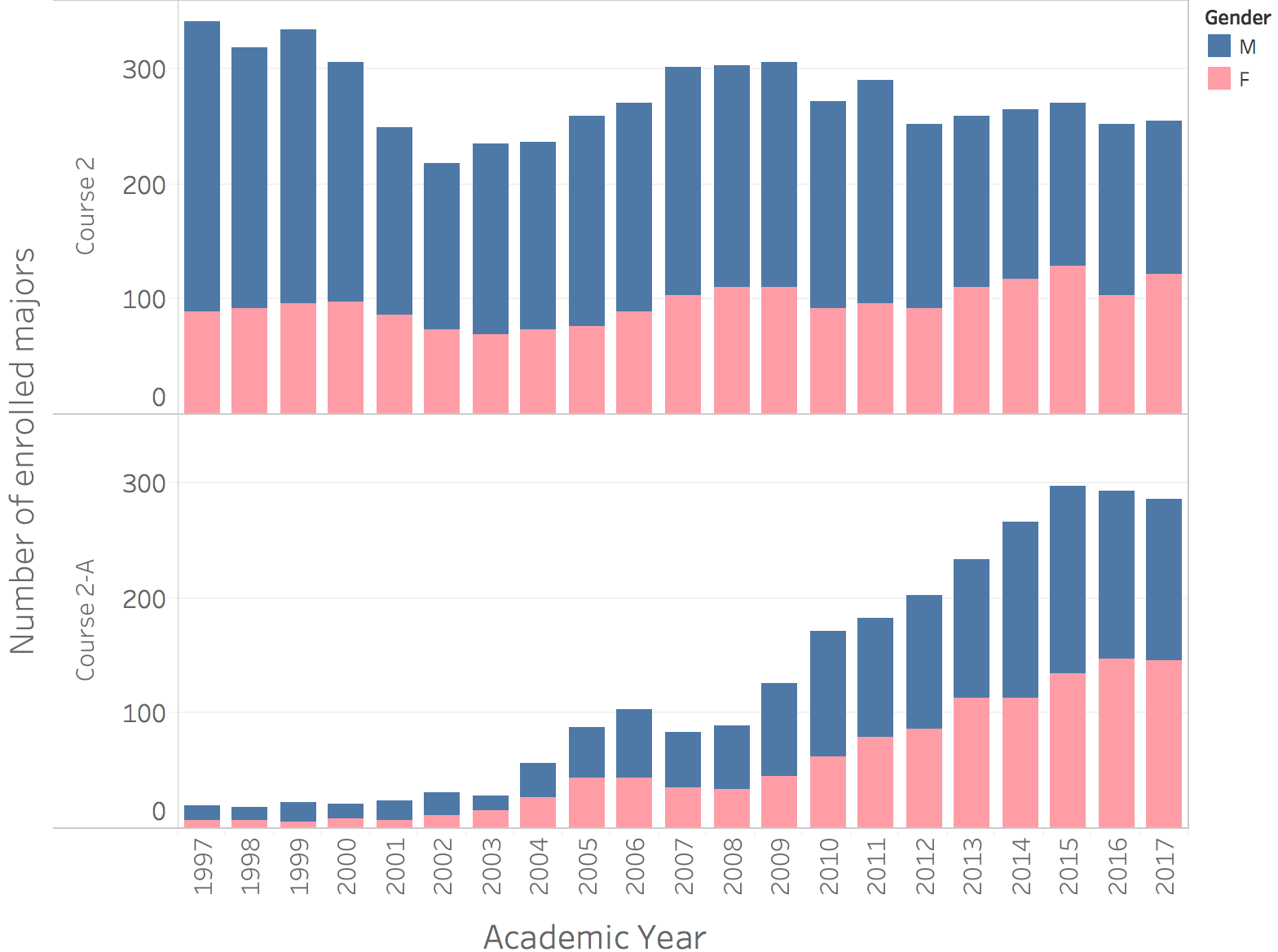
Each node (circle) on the map is an undergraduate class offered in the 2016 academic year.

The size of the node indicates total class enrollment size.

The color of the node indicates the percentage of women enrolled in the class.

Links between classes indicate pre-requisite and co-requisite relationships.



